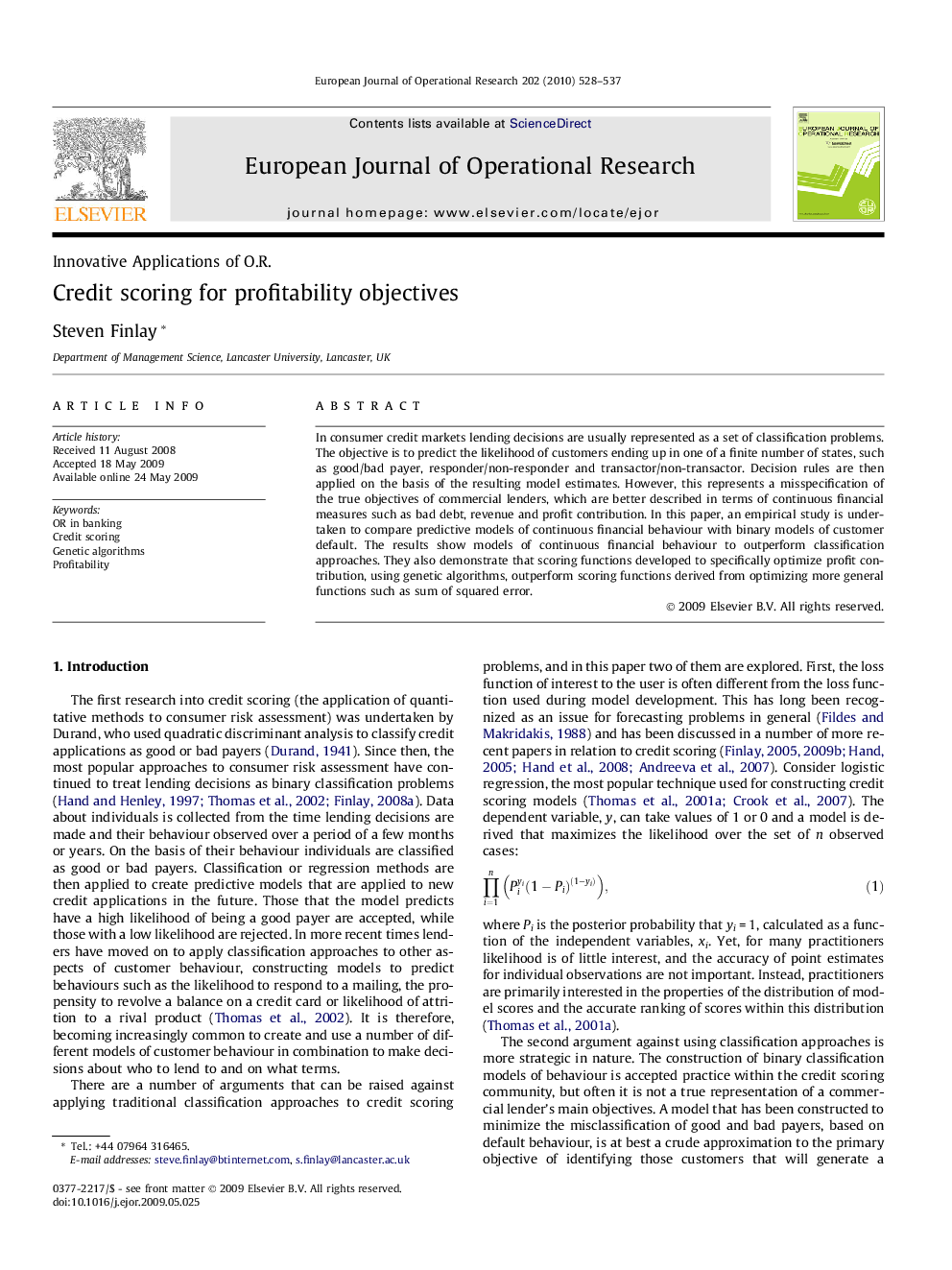| Article ID | Journal | Published Year | Pages | File Type |
|---|---|---|---|---|
| 482289 | European Journal of Operational Research | 2010 | 10 Pages |
In consumer credit markets lending decisions are usually represented as a set of classification problems. The objective is to predict the likelihood of customers ending up in one of a finite number of states, such as good/bad payer, responder/non-responder and transactor/non-transactor. Decision rules are then applied on the basis of the resulting model estimates. However, this represents a misspecification of the true objectives of commercial lenders, which are better described in terms of continuous financial measures such as bad debt, revenue and profit contribution. In this paper, an empirical study is undertaken to compare predictive models of continuous financial behaviour with binary models of customer default. The results show models of continuous financial behaviour to outperform classification approaches. They also demonstrate that scoring functions developed to specifically optimize profit contribution, using genetic algorithms, outperform scoring functions derived from optimizing more general functions such as sum of squared error.
